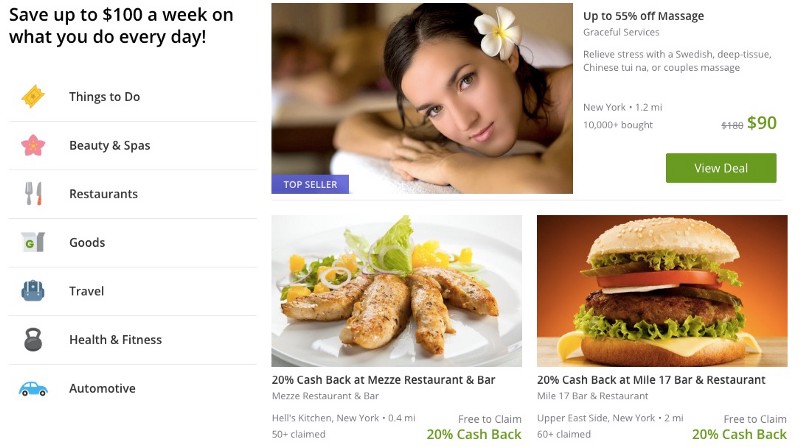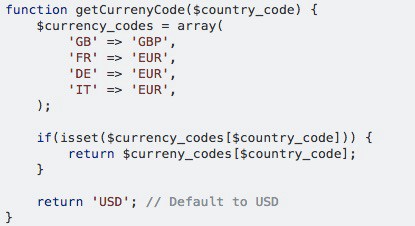The ultimate guide to personalizing by location for e-commerce sites

A personalized landing page grabs your visitors’ attention. Showing exactly what they need immediately, instead of making them dig around for it, makes the purchasing process as easy as possible — and leads them to conversion.
But 40% of marketers say their biggest challenge is getting enough data to personalize in time to encourage a purchase. With so many choices online, when customers don’t see what they need from you immediately, they’ll try another tab — and likely be gone forever.
Traditional personalization techniques, like using surveys and purchasing history, only apply to customers who’ve engaged with you in a specific way. Thousands of others are leaking out of your funnel before you have the chance to gather and act on any data. But by tracking IP addresses, you can personalize immediately by location.
Location-based personalization is automatic, so you can show customers what they need as soon as they land on your page. We put together a guide on how personalizing by location helps you make the most of your traffic — and the best practices for doing so on your e-commerce site.
The 3 C’s: Why Location Matters
E-commerce makes it easy to shop from all over the world. No matter where you are, whether you’re in bed in China or in an office in California, you can purchase a pair of jeans with a few clicks.
That’s why it’s hard to see why location matters to the online experience. If everything’s digital, we shouldn’t care where our customers are coming from — only that they’re converting.
But location is essential to that conversion, determining what your visitors want from your site. There are “three C’s” behind how you should customize your site for increased conversion:
- Culture. What someone from Florida wants from your site might be different from someone in Vancouver. One person might be looking for winter coats, another for bathing suits.
- Currency. The person from Vancouver will have Canadian dollars to spend, not American ones.
- Commute. If you have brick and mortar locations, you’ll want to show different maps of where they can visit to potential customers in Vancouver and Florida.
These three C’s are part of one bigger C: customization. By customizing the site based on these three principles — instead of making the customer go searching for what they need — you can lead them to convert. Plug the leaks in your marketing funnel by making your site experience as frictionless as possible for people in every location.
Culture: Customize the Products Customers See
About a quarter of all page views last less than 4 seconds. You only have a 4-second window to show your customers that you’re the right provider for what they need. Someone looking for heavy-duty snow gear will probably click away if they scan your landing page and only see beachwear.
While location-based personalization differs depending on what you’re selling, some factors to personalize based on are:
- Weather. Climate impacts our purchasing decisions — even beyond clothing. Will your consumer base need humidifiers during dry winters or air conditioners during hot summers? Think about how the weather shapes what people in different places will want to see first on your site.
- Holidays. While your British customers might want Boxing Day discounts on tellies and sofas, your American customers probably won’t have any idea what you’re talking about when your landing page says, “Happy Boxing Day — Take 20% off Electronics!” You can target discounts and specific messages to different cultures.
- Events/services. You can show deals specific to a certain geographic location — for example, giving 20% off if someone visits your new brick and mortar location in a specific city. Groupon is a good example of location-specific deals. If they showed these New York deals to people in Florida, Florida shoppers would probably click away thinking there weren’t deals for them nearby.

These are just some of the ways to customize content based on culture. By showing your visitors exactly what they need immediately, you minimize friction and guide them to making a purchase.
How to: Personalize Site Content
Using this Javascript snippet (and others available in IPinfo’s developer tools), you can use IPinfo’s platform to customize site content based on where the visitor is coming from.

In this snippet, we customized the welcome message based on what December 26th means to the US versus Great Britain — but with a little tinkering of the code, the possibilities are limitless.
Currency: Customize the Money Customers Pay With
13% of customers who abandon their carts do so because they see prices in a foreign currency. Out of the 67% of people who abandon carts every year, that’s 8.7% of people who visit your site in total.
You’re leaving money on the table if you ignore that 8.7% of customers, when you could make a quick shift to show them prices in their native currency. Showing country-specific currency helps you in three ways:
- It eliminates friction. If your visitors have to go into your site settings and change country or currency options, they’ll probably leave and go somewhere where it’s easier to make a purchase.
- No exchange rate misunderstandings. Not everyone knows exchange rates offhand, and some people will overestimate what your products actually cost — for example, many people think the euro is worth 2x the U.S. dollar when it’s really worth less. Potential customers might choose a different site because they think they can get a better price, even if that’s not true.
- Fixed prices lose you money. If you pre-set prices in several different currencies, you could lose money if the exchange rate changes over time.
By automatically setting the currency based on where a potential customer is visiting from, you make sure that they can make a purchase as easy as possible — and that you’re getting the right amount of money for your product.
How to: Personalize Country currency
You can personalize what currency your visitors see in the same way that you can personalize what content they see. You use IPinfo’s platform to discover a visitor’s country, then map their currency code to their country code. Here’s an example of what a PHP snippet for this might look like:

You can find the appropriate currency codes for any country here, in Google’s reference materials. It’s easy to customize this snippet for your own site, depending on what and where you’re selling.
Commute: Customize the Map Customers See
49% of consumers cite not being able to feel, try on, or touch a product as one of their least favorite parts of online shopping. Even if they see something they like, it’s easy to abandon their cart if they think, “I’ll just look for curtains I know I love the next time I’m at the store.”
But if your site isn’t for the store they normally visit, you’ll be out of luck. Putting a map on your site that’s personalized by location can show them that there’s a Curtains-R-Us right next to the Trader Joe’s they already go to, or in the mall next to their office building.

A map on your site increases convenience — and thus increases conversion — even if your visitors aren’t comfortable making an online purchase. Knowing that it’s easy for them to make a visit to your brick and mortar location and exactly how they can do so increases the likelihood that they’ll follow through.
How to: Add a Map of Brick and Mortar Stores
To embed a map of your brick and mortar locations or in-person events, follow these instructions from Google. Go to Google maps, and then click “Share or Embed Map” for an HTML code of the map you want to share.
But things get a little trickier when you want to personalize that map. While most browsers have a limited automatic geo-locater function, your visitors have to give permission for it to be turned on. Using IPinfo’s geo-locator (this snippet), you can get the city and region your visitors are in without the friction of asking.

Pave a Path to Conversion
With most methods of personalization, you have to gather the data, then personalize. You personalize for returning site visitors or returning buyers after you learn about them.
But those visitors might never come back if you don’t catch their attention immediately — which is why it’s so crucial that location personalization helps you personalize automatically. You make the most of the money you spend on acquisition because potential buyers aren’t leaking out of your funnel.
By tracking IP addresses, you have a seamless way to make sure your visitors get the information they need to convert, when they need it. Start tracking them for free by clicking here!
IPinfo is a comprehensive IP data and API provider with flexible pricing plans to meet your business needs. We handle billions of API requests per month, serving data like IP geolocation, ASN, VPN detection, and more. Sign up for a free account or contact our data experts to learn more.
About the author

Internet Data Expert